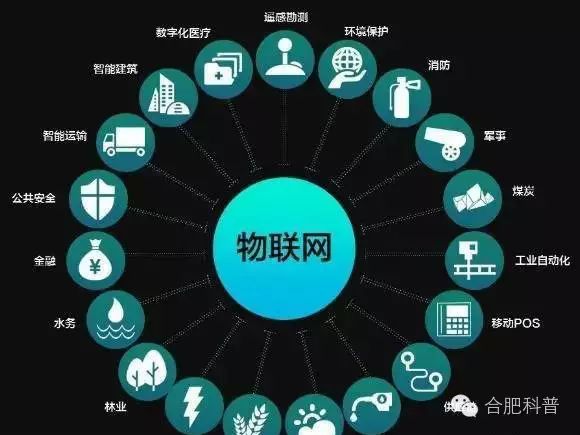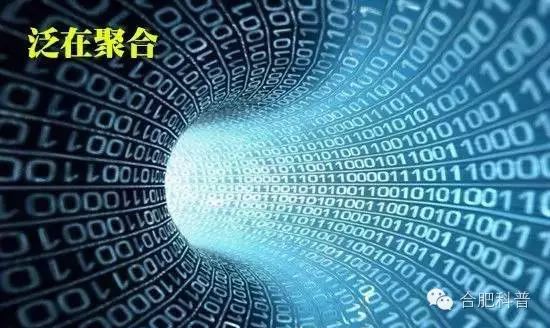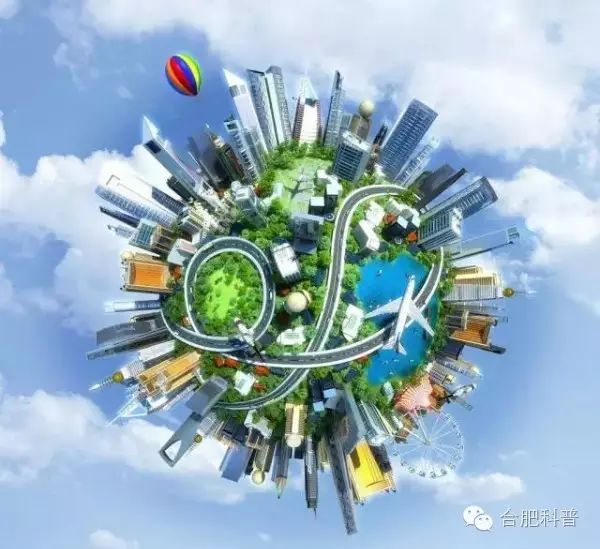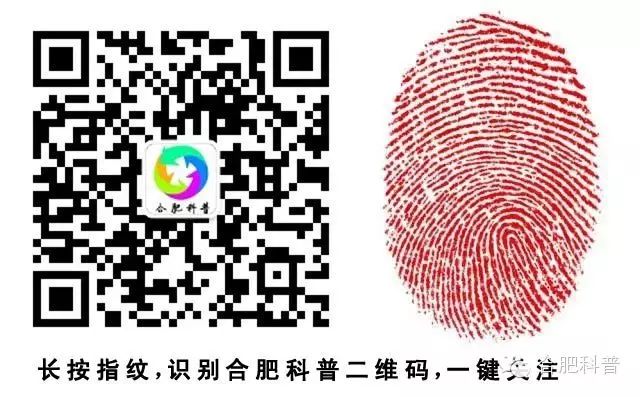

Concept of the Internet of Things
The concept of the Internet of Things was proposed in the United States as early as 1999, originally called the sensor network. Its definition is: through information sensing devices such as RFID, infrared sensors, global positioning systems, and laser scanners, according to agreed protocols, to connect any item through the domain name of the Internet of Things, to exchange information and communicate, in order to achieve intelligent identification, positioning, tracking, monitoring, and management.

The “Internet of Things concept” is an extension of the “Internet concept,” expanding its user end to facilitate information exchange and communication between any objects.
Internet of Things (IoT) is widely recognized both domestically and internationally as first proposed by Professor Ashton of the MIT Auto-ID Center in 1999 during his research on RFID. In 2005, the International Telecommunication Union (ITU) published a report of the same name, which changed the definition and scope of the Internet of Things, greatly expanding its coverage, no longer just referring to RFID-based IoT.
In August 2009, during a visit to Wuxi, Premier Wen Jiabao proposed “Perceiving China.” Wuxi City took the lead in establishing the “Perceiving China” research center, and the Chinese Academy of Sciences, operators, and several universities established IoT research institutes in Wuxi. The Internet of Things was officially listed as one of the five emerging strategic industries in the country, included in the government work report of the Third Session of the Eleventh National People’s Congress, and has attracted great attention from society in China. Rather than being an external concept, the concept of the Internet of Things has become a “Made in China” concept, its coverage has kept pace with the times, and it has transcended the scope indicated by Professor Ashton in 1999 and the ITU report in 2005, thus being labeled with a “Chinese style.”
Definition
The simplest and clearest definition: The Internet of Things (IoT) is a network based on the Internet and traditional telecommunications networks, enabling all independently addressable ordinary physical objects to interconnect. It has three important characteristics: deviceification of ordinary objects, interconnectivity of autonomous terminals, and intelligent universal services.
Other definitions: The Internet of Things refers to the ubiquitous end devices (Devices) and facilities (Facilities), including sensors with “inherent intelligence,” mobile terminals, industrial systems, building control systems, smart home devices, video surveillance systems, etc., and “externally enabled” assets (Assets) such as various items tagged with RFID, and individuals and vehicles carrying wireless terminals, etc., through various wireless and/or wired long-distance and/or short-distance communication networks to connect to the domain name of the Internet of Things, achieving interconnectivity (M2M), grand integration of applications, and cloud computing-based SaaS operations, etc., in intranet, extranet, and/or Internet environments, using appropriate information security mechanisms to provide secure, controllable, and even personalized real-time online monitoring, positioning and tracing, alarm linkage, scheduling and command, emergency management, remote control, security prevention, remote maintenance, online upgrades, statistical reporting, decision support, and management and service functions of the “ten thousand things” for efficient, energy-saving, safe, and environmentally friendly “management, control, and operation” integration.
Understanding the Internet of Things in one sentence
Connecting all items to the Internet through information sensing devices for information exchange, i.e., interconnecting objects to achieve intelligent identification and management.
Ubiquitous aggregation
The industrial practice of IoT globally mainly focuses on three major directions.
What is the significance of data “ubiquitous aggregation” in the Internet of Things?
The first practice direction is called “smart dust,” advocating the interconnectivity of various sensor devices to form a network with intelligent functions.
The second practice direction is the well-known logistics network based on RFID technology, which advocates strengthening the management of logistics and logistics information through the identification of items, while forming intelligent information mining through information integration.
The third practice direction is the Internet of Things in the sense of data “ubiquitous aggregation,” which believes that the Internet has created a vast ocean of data, and each data point should be accurately identified by its attributes to fully realize the resource utilization of data, which is both a necessary requirement for the deep development of the Internet and the mission of the Internet of Things.
In comparison, the Internet of Things in the sense of “smart dust” belongs to the generalization of industrial buses. Such industrial practices have never stopped in industrial production since the integration of machinery and electronics and industrial informatization; it was just not called the Internet of Things but rather industrial buses at that time. This kind of Internet of Things will steadily advance due to the development of sensing technology and various local area network communication technologies, based on its inherent scientific and technological laws, and will not accelerate due to a human movement.

In the context of RFID, the standards based on EPCglobal were defined as the core standards for the future Internet of Things upon release, but the inherent limitations of the RFID electronic tags as the only means make it difficult to point to the intelligent planet advocated by the Internet of Things. The reason is that the information that the connection between objects can convey to people is very limited, while the connection between the states of objects is what truly allows people to explore the various connections that universally exist between things, thereby gaining new insights and wisdom.
“Ubiquitous aggregation” aims to realize the vast ocean of data created by the Internet and achieve aggregation in the sense of mutual recognition. These data represent not only objects but also the states of objects, and even various concepts defined by humans. The “ubiquitous aggregation” of data will enable people to conveniently retrieve various data at will, continuously mining the complex relationships that universally exist between the matters represented by these data with the help of various mathematical analysis models, thereby achieving a revolutionary leap in human cognitive ability towards the surrounding world.
Historical Origins
The concept of the Internet of Things was proposed in China in 1999, originally called the sensor network. The Chinese Academy of Sciences initiated research and development on sensor networks as early as 1999. Compared to other countries, China’s technology research and development level is at the forefront of the world, possessing comparative advantages and significant influence.
On November 27, 2005, at the World Summit on the Information Society held in Tunisia, the International Telecommunication Union (ITU) officially proposed the concept of the Internet of Things in its report “ITU Internet Report 2005: Internet of Things.”
On August 24, 2009, Wang Jianzhou, president of China Mobile, also mentioned the concept of the Internet of Things in a public speech in Taiwan.
Chief Engineer Zhu Hongren of the Ministry of Industry and Information Technology stated at the summer report meeting on the operation of China’s industry in 2009 that the Internet of Things is a new concept and that as of 2009, there was still no widely accepted definition. He said that in general, the “Internet of Things” refers to a new technology that connects various sensors with the existing “Internet.”
The Internet of Things is built on the foundation of the computer Internet, utilizing technologies such as RFID and wireless data communication to construct an “Internet of Things” that covers everything in the world. In this network, items (goods) can communicate with each other without human intervention. Its essence is to use radio frequency automatic identification (RFID) technology to achieve automatic identification of items (goods) and the interconnection and sharing of information through the computer Internet.
The emergence of the Internet of Things concept has broken traditional thinking. The past mindset has always separated physical infrastructure from IT infrastructure; on one side are airports, highways, and buildings, while on the other are data centers, personal computers, broadband, etc. However, in the era of the Internet of Things, reinforced concrete and cables will integrate with chips and broadband to form a unified infrastructure, in this sense, the infrastructure resembles a new earth. Therefore, some industry insiders believe that the Internet of Things and smart grids are organic components of the smart earth.
However, some viewpoints argue that it is difficult to determine how likely the rapid popularization of the Internet of Things is. After all, RFID is already well-known in the market, but relevant listed companies such as Newland have shown that the high growth of performance has not yet emerged, leading to significant differences in opinions regarding the speed of the Internet of Things’ popularization. However, it is certain that against the backdrop of the national push for the integration of industrialization and informatization, the Internet of Things will be a realistic breakthrough in the informatization process of industry and even more sectors. Moreover, RFID technology has been applied in closed-loop applications across various fields and industries. In these pioneering successful cases, information about items has already been automatically collected and uploaded online, significantly improving management efficiency, and some dreams of the Internet of Things have already been partially realized. Thus, the embryonic form of the Internet of Things is like the early form of the Internet, a local area network; although its role is limited, its promising future is undeniable.
In recent years, the promotion of smart homes has indeed connected household appliances through the network. It can be imagined that as the Internet of Things develops to a certain stage, household appliances can connect to external networks, transmitting signals through sensors. Manufacturers can know the usage of your household appliances in advance, perhaps even before you are aware of a malfunction. One day, a repairman might suddenly show up to inform you that your air conditioner has a problem, and you might be astonished and disbelieving.
The development of the Internet of Things will inevitably drive the development of sensors, and as sensors reach a certain level of advancement, transformers will truly appear before us.
Application Fields
1. Smart Home: Utilizes advanced computer technology, Internet of Things technology, and communication technology to organically combine various subsystems related to furniture and life, enabling more comfortable, convenient, effective, and safe living.
2. Smart Transportation
3. Smart Healthcare
4. Smart Grid: Built on the traditional power grid, it is a comprehensive system integrating sensing, communication, computing, decision-making, and control, which obtains the operational status of resources and devices at various layers of the power grid, conducting hierarchical control management and power distribution, achieving high integration of energy flow, information flow, and business flow, improving the operational stability of the power system, maximizing equipment utilization, enhancing safety and reliability, saving energy and reducing emissions, and improving the quality of power supply for users while enhancing the utilization efficiency of renewable energy.
5. Smart Logistics
6. Smart Agriculture
7. Smart Power
8. Smart Security
9. Smart Cities
10. Smart Cars
11. Smart Buildings
12. Smart Water Management
13. Business Intelligence
14. Smart Industry
15. Safe Cities
Smart Cities
Smart cities are a macro concept reflecting society’s desire for knowledge-based, information-based, and efficient urban development, focusing on the overall effects of urban development. Informatization is an important aspect of smart cities, and society’s expectations for smart cities are not limited to informatization; there is a demand for overall intelligent development of cities.

Advantages of Smart Cities
Easy to promote, but the downside is that it cannot be precisely defined, as “smart” is a term familiar to people, and they will naturally interpret smart cities based on their understanding; thus, “smart city” can only be a public perspective, not a precise definition in information engineering.

Source: Talent Shortage Training Project

For more micro-articles and event details, click to read the original text
